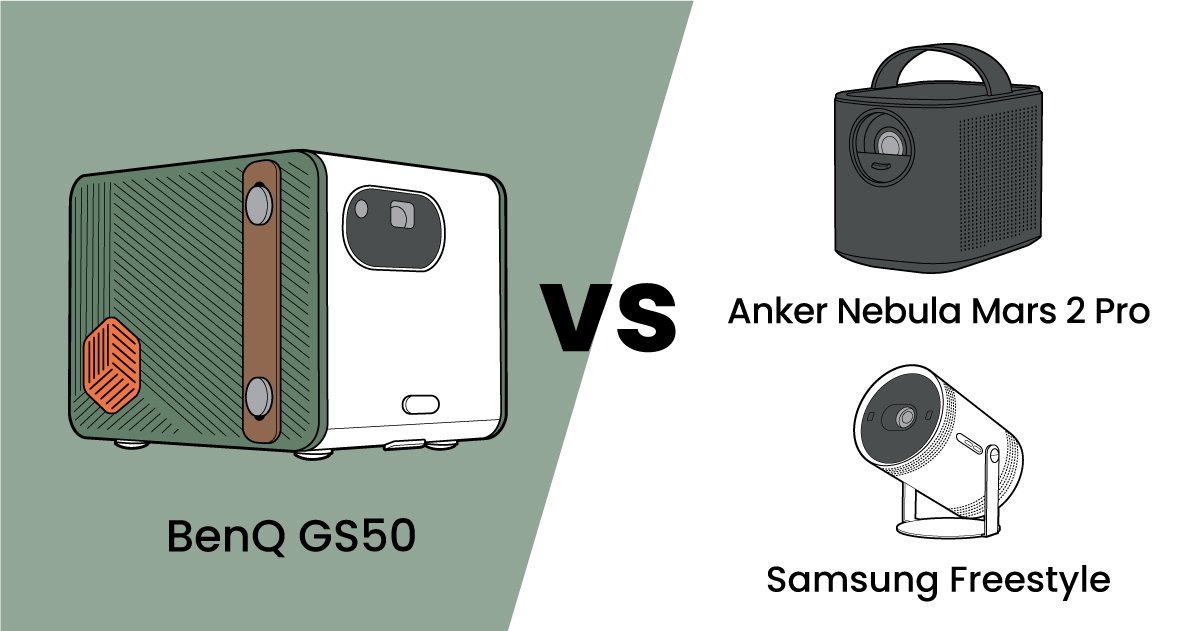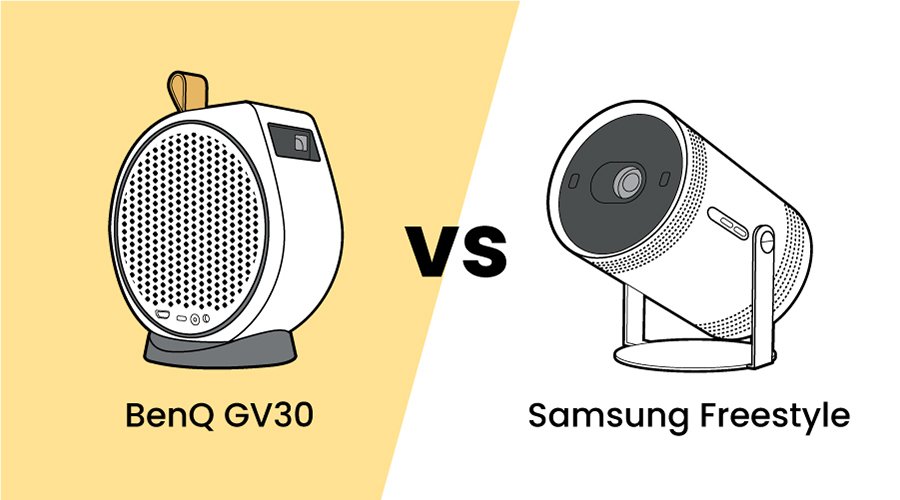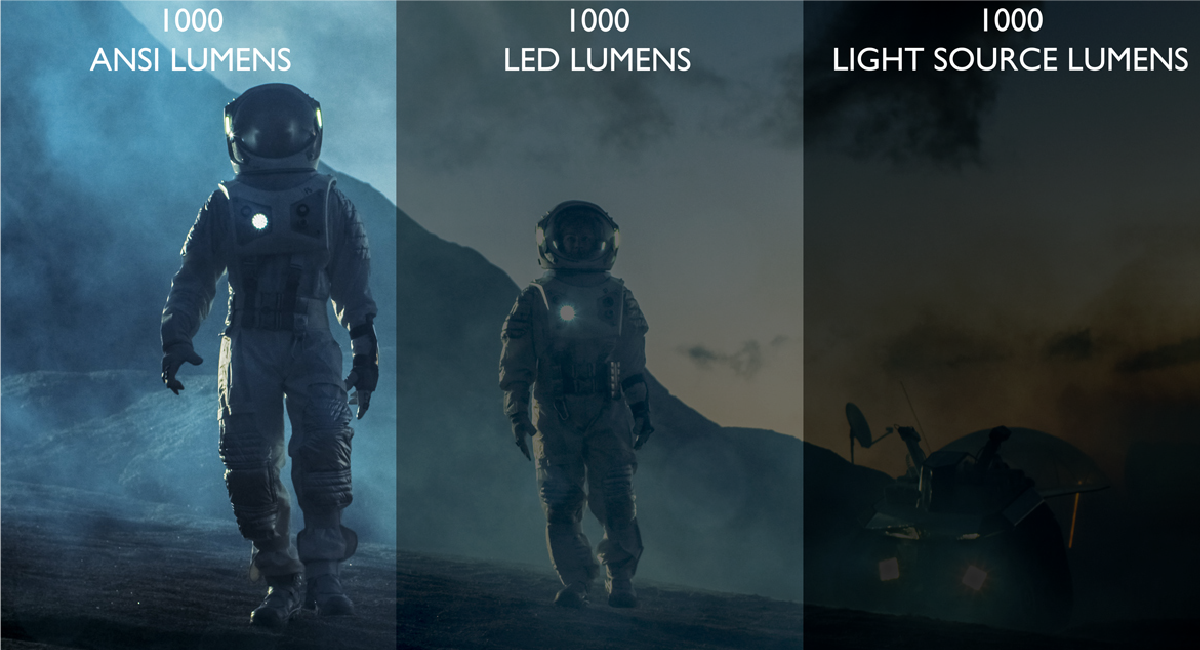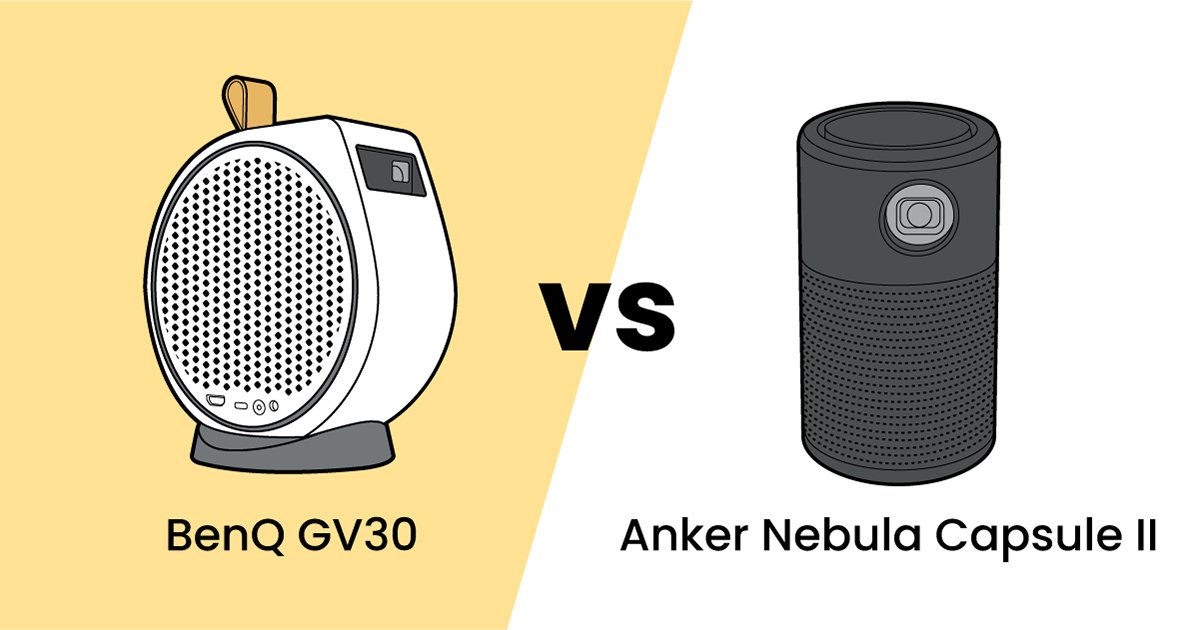While none of the currently available portable projectors offer the same image quality of their home cinema counterparts, there’s a lot of variance between different models in the segment. The cheap ones almost always cut corners and offer basic display capabilities, while better models come quite close to home projector picture quality.
Brightness and resolution stand as the two most important specifications with regards to image quality. Brightness determines how distinct the visuals appear, even in relatively bright times of the day or in brighter rooms. Low brightness means the image will become washed out if ambient light increases. Resolution of course refers to how many pixels you get on the screen, and the more the merrier. Cheap projectors often go with low res 480p or even lower than that, and that’s no longer viable, so steer clear.
The BenQ GS50 and Samsung Freestyle both offer full HD 1080p, which is ideal for outdoors projection. The Anker Nebula Mars 2 Pro settles for HD 720p. That’s not too bad, but significantly lower than 1080p and you will notice the difference, especially when sitting closer to the projection surface.
It’s not always just about pixels, but about better pixels, as the experts say. HDR or high dynamic range used to be a big deal on TVs and home projectors, but now it’s standard. And good portable projectors have joined in on this, while basic ones have not. HDR produces brighter and more vibrant displays while improving dark and bright areas of the image with more detail. The Samsung Freestyle and BenQ GS50 support HDR10 and HLG, while Anker’s entry lacks HDR support. Something to keep in mind.
As we said, brightness is of utmost importance. For projectors, brightness is measured in ANSI lumens, which aren’t the same as nits or candelas on TVs and monitors. If you’re interested, you can learn how to convert LED lumen and light source lumen to ANSI lumen. As for the three models we’re looking at, the BenQ GS50 comes in as the brightest with ANSI 500 lumens. That’s very bright for nighttime projection and not bad for dusk and dawn. It may not be enough for midday viewing. That time of day remains a challenge for portable projectors, as to remain compact they have to use smaller light sources and don’t have the beam power of larger, home use projectors.
Overall, we’d say a minimum of 300 lumens should be your goal when shopping around, but 500 or more is definitely better. Also, maybe learn more about projectors for daytime use.



?$ResponsivePreset$)


